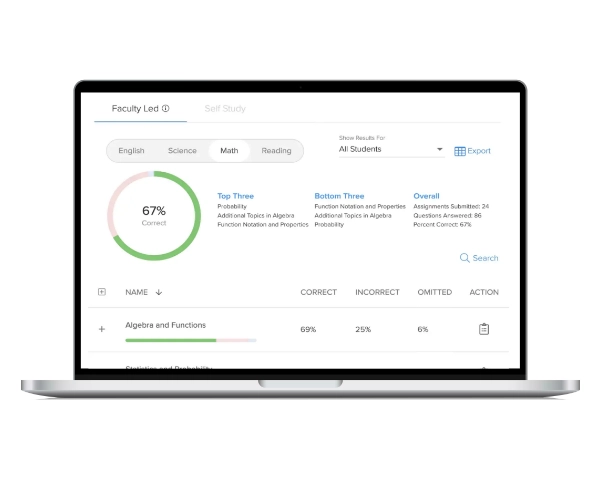As the school year comes to a close, there is so much on the minds of high school administrators: Will our graduation rate live up to expectations? Can I keep all students focused until the last day of classes? Will I find my desk in the middle of the football field one morning as a senior prank?
While these concerns are valid, there is one Advanced Placement-specific topic many administrators consider at this time. Yes, the spring AP exam and student success is top of mind. However, that’s a done deal by this time in the school year; instead, the focus should be on the next school year.
For proactive administrators, late spring is an ideal time to take a deep look at who is slated to teach AP courses in the coming fall and spring, if those teachers are the right fit, and how administrators can act now to ensure teacher and student success.
Our College Readiness team here at UWorld—all former AP educators and administrators—have a handful of key suggestions for administrators to consider for moving forward:
- Now’s the time to address professional development needs and make sure teachers (especially those new to a course) have plans to attend high-quality APSI’s over the summer. Work with your AP teachers on individualized professional development plans (conferences, webinars, etc.) and encourage them to be AP readers during summer months for the College Board.
- Check in frequently at the end of this year to ensure your teachers are on track and effectively teaching the content in the College Board-approved sequence. Teachers need to get through the course in the appropriate time, which allows time to review prior to the exam. If excuses arise (“I lost some time because of this or that and I’m almost done; I just need one more week”) and they don’t teach the content students need in a logical order, students are unlikely to learn effectively and do well in the course or exam. It’s critical for administrators to have these conversations during instructional planning meetings and conduct walk-throughs or pop-ins throughout the school year. With UWorld’s Learning Tools for AP Courses, administrators can monitor what is being assigned, when it is being assigned, and how students are performing.
- During those check-in meetings with teachers, make sure they are not relying solely on rote learning throughout the year to teach content or prepare for the AP exam. Administrators should set up regular meetings with teachers to discuss how they are providing meaningful learning opportunities and checking for understanding, and find ways to support the process. Before or after school tutoring sessions, lunch groups, or even the occasional weekend AP sessions in the spring are great suggestions, and ones that can be facilitated by administrators themselves. Also, providing effective resources for teachers to use throughout the year is essential—and should always include tools that are current, employ active learning methods, provide immediate feedback, and match the style and rigor of the exam.
- Are teachers administering high-quality mini assessments after each unit? This is an easy “check and revise” if not. Talk to your teachers about the curriculum in use and help them obtain an online program that includes unit tests or some other common assessment that can be used across the campus and/or district. If you don’t know how students are performing after each unit, you’re going to be playing catch-up during exam review, or it’s going to be too late. Filling in learning gaps during the year is a far more effective approach.
- Make sure your AP teachers have effectively taught FRQ (free-response question) strategies. Some teachers may focus too much on the multiple-choice section. FRQ practice takes time, effort, and expertise, so now’s the time to make sure your teachers have the necessary skills to teach this method effectively; if not, be prepared to add in some support. Teachers should begin with FRQs in September and teach the process systematically. For example: teachers should start by showing students how to write a thesis, and once they have mastered that skill move into the next component of FRQ’s. Good writing can be taught, but it needs to be done over time to be effective. Since half the AP exam is FRQs, it’s important that teachers start early and are consistent. If they don’t know how to teach FRQs, find them some support or professional development.
Take the time now to make sure the next group of AP students have every chance at success on their exams.
At UWorld, we are committed to helping educators do what they do best: make a difference in the lives of their students by helping each student reach their full potential.
For districts, schools, and educators looking to enhance AP classes and boost student scores, UWorld offers an innovative AP resource that helps students master the concepts needed for AP course and exam success. Discover how we can help your AP program today.




